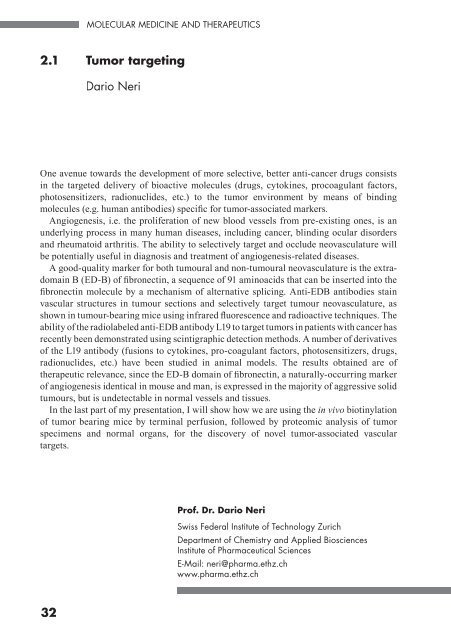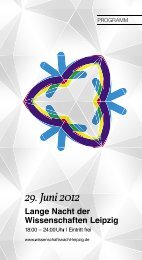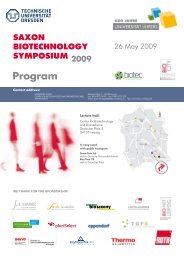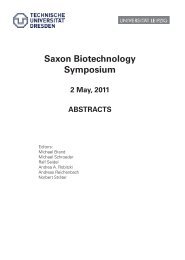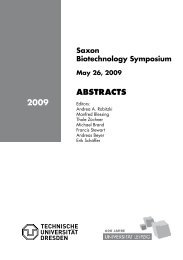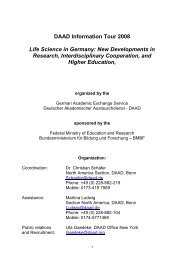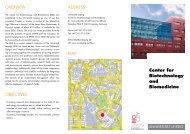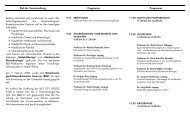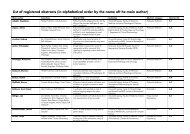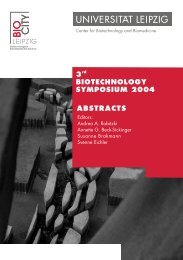biotechnology symposium 2005 abstracts - Universität Leipzig
biotechnology symposium 2005 abstracts - Universität Leipzig
biotechnology symposium 2005 abstracts - Universität Leipzig
You also want an ePaper? Increase the reach of your titles
YUMPU automatically turns print PDFs into web optimized ePapers that Google loves.
32<br />
MOLECULAR MEDICINE AND THERAPEUTICS<br />
2.1 Tumor targeting<br />
Dario Neri<br />
One avenue towards the development of more selective, better anti-cancer drugs consists<br />
in the targeted delivery of bioactive molecules (drugs, cytokines, procoagulant factors,<br />
photosensitizers, radionuclides, etc.) to the tumor environment by means of binding<br />
molecules (e.g. human antibodies) specifi c for tumor-associated markers.<br />
Angiogenesis, i.e. the proliferation of new blood vessels from pre-existing ones, is an<br />
underlying process in many human diseases, including cancer, blinding ocular disorders<br />
and rheumatoid arthritis. The ability to selectively target and occlude neovasculature will<br />
be potentially useful in diagnosis and treatment of angiogenesis-related diseases.<br />
A good-quality marker for both tumoural and non-tumoural neovasculature is the extradomain<br />
B (ED-B) of fi bronectin, a sequence of 91 aminoacids that can be inserted into the<br />
fi bronectin molecule by a mechanism of alternative splicing. Anti-EDB antibodies stain<br />
vascular structures in tumour sections and selectively target tumour neovasculature, as<br />
shown in tumour-bearing mice using infrared fl uorescence and radioactive techniques. The<br />
ability of the radiolabeled anti-EDB antibody L19 to target tumors in patients with cancer has<br />
recently been demonstrated using scintigraphic detection methods. A number of derivatives<br />
of the L19 antibody (fusions to cytokines, pro-coagulant factors, photosensitizers, drugs,<br />
radionuclides, etc.) have been studied in animal models. The results obtained are of<br />
therapeutic relevance, since the ED-B domain of fi bronectin, a naturally-occurring marker<br />
of angiogenesis identical in mouse and man, is expressed in the majority of aggressive solid<br />
tumours, but is undetectable in normal vessels and tissues.<br />
In the last part of my presentation, I will show how we are using the in vivo biotinylation<br />
of tumor bearing mice by terminal perfusion, followed by proteomic analysis of tumor<br />
specimens and normal organs, for the discovery of novel tumor-associated vascular<br />
targets.<br />
Prof. Dr. Dario Neri<br />
Swiss Federal Institute of Technology Zurich<br />
Department of Chemistry and Applied Biosciences<br />
Institute of Pharmaceutical Sciences<br />
E-Mail: neri@pharma.ethz.ch<br />
www.pharma.ethz.ch


